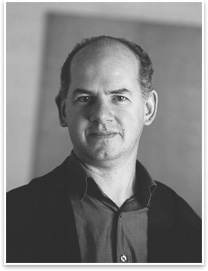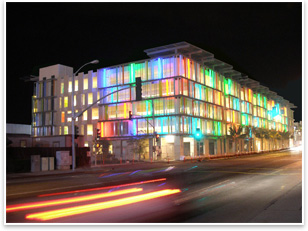
| James Mary O’Connor, AIA
Education: I’m originally from Ireland, so I did my bachelor’s of architecture in Ireland and then came out here and did my master’s at UCLA. Becoming an expat and working for Charles Moore: I got into UCLA on a Fulbright Scholarship, and originally the idea was to come out here for two years and then go back and live in Ireland. I never intended to emigrate. At that time in Ireland, there was no economy, and nothing was going on—and there were so many opportunities here. At UCLA, my teacher was Charles Moore. Charles asked me to come and help him out in the office when I was in college and during the summer vacation. After that, I set up practice on my own with a friend for two years. Then, I got a call from Charles one day asking if I’d come and help him on a project. I thought: “That sounds a lot more attractive than this private practice stuff.” I was barely surviving in private practice on my own. So, out of that, I met Charles and Buzz Yudell and John Ruble, and that was career-setting for me. They inspired me, and I got swallowed up in doing these interesting projects and flying around the world.
Influential architects: I think probably Alvar Aalto, Alvaro Siza in Portugal, and Rudolf Schindler here in Los Angeles. Last book read: The Devil in the White City by Erik Larson. Favorite places: Katsura Villa in Kyoto is one of my favorite buildings, and Utzon’s church [Bagsvaerd] in Copenhagen. I’ve been down there many times over the years. My favorite garden would be the Humble Administrator’s Garden in Suzhou, China. It’s very small and you can get lost in there, but it has this magical quality to it. When I first went there, I thought that everything was alive, moving, and each view you walked in was extraordinary. When I finished there, a Chinese landscape architect I was talking to said, “Now you have to come in every season.” So now I’ve been back there in different times and each time it’s changed and it seems extraordinary. These gardens are only now becoming known to the outside world as China opens up. Professional interest: One aspect that I’m very interested in is extending architecture beyond the normal boundaries and looking at ordinary, mundane building types like parking structures or power plants or gas stations and extending architecture to those buildings. I’ve just finished what probably will be the first green parking structure in the country. It’s going to be open next week. It’s for the city of Santa Monica Civic Center. Normally, when people talk about architecture, they talk about cathedrals and opera houses—extraordinary building types—but it’s not parking structures. But often, in the U.S., ordinary buildings make up the cities and the ordinary things—even the bus stops and public transportation—make the fabric of the city, but it seems to me that it doesn’t get the attention. If you go to Denmark, often the ordinary things are very well designed, and they make up the bigger things. Here in Los Angeles, it seems like the exceptional things get all the emphasis—a wealthy person’s home, a cathedral, the Disney concert hall—but the civic and ordinary buildings of the city seem to be mundane. So one of the things I’m interested in is bringing up that whole level. With the City of Santa Monica, at the start of the project we talked about taking their new green standards and taking something which is generally bad—like a parking structure—and turning it upside down to be a message for the city. Last week, I was out there in the evening and saw some tourists taking photographs of the structure and I thought, “Well that’s it. That’s what I want.” I was delighted to see people taking photographs of it because normally a parking structure is a horrible environment at night. A lot of the iconic architecture that the media picks up on seems to me to have an empty feeling to it. It seems, for now, that some people have lost the social message in architecture. Some architects working in earlier periods had more of a social commitment to their work. I think one of the challenges of our work is to make cities more livable, to make places better for people. I’m not interested in urban tattoos. I’m all for interesting stuff, but it seems to me that when you get close to some of these buildings, they lose their contact with the culture and the place and miss out on the social aspect of the building. Greatest achievement: My two kids. They’re 19 and 22, and they sound like men. I think they’re the secret of life. It’s a way of living forever, or at least experiencing life again. Best practice tip for colleagues and advice for young architects: Never stop dreaming. |
||
Copyright 2007 The American Institute of Architects. All rights reserved. Home Page |
||
news headlines
practice
business
design


 On becoming an architect:
On becoming an architect: